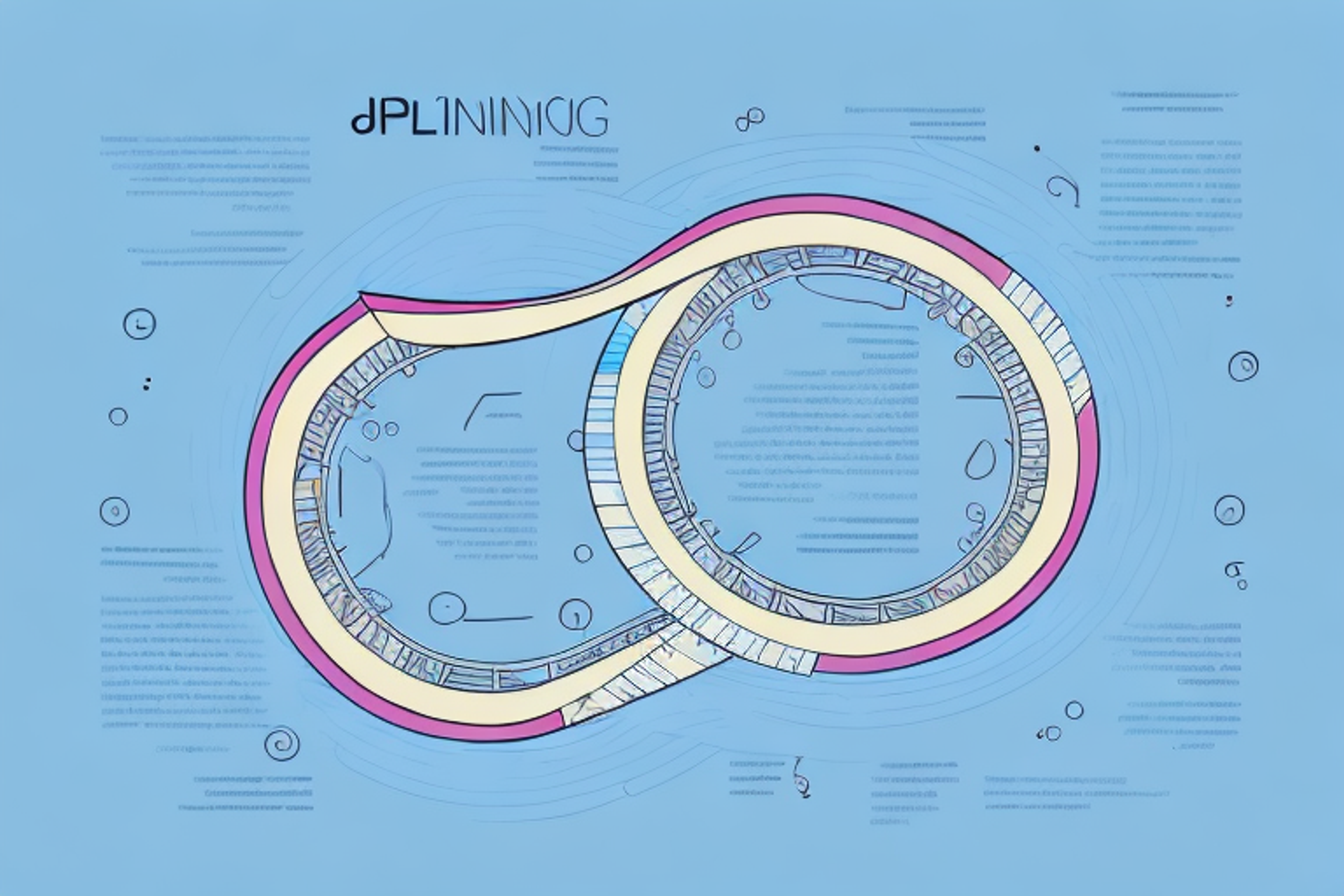The Pyramid Principle in Communication: A Key to Effective Consulting
Discover the power of the Pyramid Principle in communication and how it can help you become a more effective consultant.
Posted April 10, 2025

Table of Contents
Free Event

Featuring Mattijs B.
Crack the MBB Consulting Case
Starting Wednesday, April 16
4:30 PM UTC · 30 minutes

Featuring Mattijs B.
Effective communication is the cornerstone of successful consulting. Consultants are often faced with the task of presenting complex information to clients in a way that is both easy to understand and compelling. That's where the Pyramid Principle comes in. It is a structured communication approach that can help consultants deliver their ideas clearly and in a logical order, so that clients can easily understand and engage with the information presented to them.
Understanding the Pyramid Principle: A Beginner's Guide
At its core, the Pyramid Principle is a method for communicating information that is based on the principle of "top-down" communication. Essentially, this means that the most important information is presented first, followed by supporting information, with each subsequent layer building on the preceding one. This approach is called the "pyramid" because the structure of each piece of information resembles the shape of a pyramid.
To effectively use the Pyramid Principle, consultants must first identify the key point they want to communicate. This key point should be stated at the top of the pyramid, with related supporting points and details presented in the subsequent layers. This structure ensures that the most important information is immediately conveyed, and that the supporting information is presented in a logical order that is easy to follow.
One of the key benefits of using the Pyramid Principle is that it helps to eliminate unnecessary information and ensures that the message is clear and concise. By starting with the most important information, the audience can quickly understand the main point without getting bogged down in irrelevant details. Additionally, the Pyramid Principle can be applied to a wide range of communication formats, including presentations, reports, and emails, making it a versatile tool for any consultant or business professional.
Why the Pyramid Principle is Important for Consultants
Consultants are often tasked with delivering complex information to clients who may not be experts in the field. This means that effective communication is critical. The Pyramid Principle offers a clear and structured approach to communication that ensures that clients understand the key message being presented. This can help build trust and credibility with clients, as they will appreciate a consultant who can deliver information in a clear and concise manner.
Furthermore, the Pyramid Principle can also help consultants to better organize their own thoughts and ideas. By starting with a clear and concise main message, consultants can then build a logical and coherent argument to support that message. This can help consultants to avoid getting lost in the details and losing sight of the main point they are trying to make.
Finally, the Pyramid Principle can be applied to a wide range of communication formats, including written reports, presentations, and even verbal communication. This means that consultants can use this approach in a variety of settings and situations, making it a valuable tool for any consultant looking to improve their communication skills.
The Origins of the Pyramid Principle and its Evolution over Time
The Pyramid Principle was developed by Barbara Minto in the 1970s while she was working at McKinsey & Company, a well-known management consulting firm. Since its inception, the Pyramid Principle has gained widespread acceptance and is now used by consultants and businesses all over the world. The technique has evolved over time, with various adaptations and modifications being made to suit different industries and communication styles.
One of the key reasons for the popularity of the Pyramid Principle is its effectiveness in presenting complex information in a clear and concise manner. The technique involves structuring information in a logical and hierarchical manner, with the most important points presented first. This helps the audience to quickly grasp the main message and understand the supporting details.
Over the years, the Pyramid Principle has been adapted to suit different types of communication, including written reports, presentations, and even emails. The technique has also been used in a variety of industries, from finance and healthcare to technology and education. Despite these adaptations, the core principles of the Pyramid Principle remain the same, emphasizing the importance of clear and structured communication.
Applying the Pyramid Principle in Different Consulting Scenarios
The Pyramid Principle can be applied in a variety of consulting scenarios, whether it be during a presentation, in a report, or during a meeting. In each of these scenarios, the key message should be presented at the top of the pyramid, with supporting information presented in the layers below. The Pyramid Principle can also be used when developing a project proposal, where the proposal's key points are presented at the top of the pyramid, with supporting details in the layers below.
Another scenario where the Pyramid Principle can be applied is in the development of a business strategy. By presenting the key objectives and goals at the top of the pyramid, and supporting details such as market analysis and competitive landscape in the layers below, the strategy can be communicated clearly and effectively to stakeholders.
Furthermore, the Pyramid Principle can also be used in problem-solving situations. By breaking down the problem into its key components and presenting them in a logical order, the solution can be easily understood and implemented. This approach can be particularly useful in complex problem-solving scenarios, where a clear and structured approach is necessary.
Examples of Successful Implementation of the Pyramid Principle in Consulting
One of the most successful implementations of the Pyramid Principle can be seen in McKinsey & Company's consulting approach. The firm's consultants are trained extensively in using the Pyramid Principle, and it is a key part of their consulting toolkit. This approach is also used by other consulting firms, including Bain & Company and Boston Consulting Group. These firms have found that the Pyramid Principle ensures that their clients are presented with information that is easy to understand and compelling.
Another example of successful implementation of the Pyramid Principle can be seen in the field of technical writing. Many technical writers use the Pyramid Principle to organize complex information and make it more accessible to readers. By starting with a clear main idea and supporting it with logically organized sub-points, technical writers can create documents that are easier to read and understand. This approach has been adopted by companies such as Microsoft and IBM, who use the Pyramid Principle to create user manuals, technical guides, and other documentation.
Common Pitfalls to Avoid When Using the Pyramid Principle in Communication
While the Pyramid Principle is an effective communication method, there are some common pitfalls that consultants should avoid. One common mistake is failing to identify the key message or point early on in the communication. Another mistake is presenting too much information, which can overwhelm clients and make the communication less effective. Avoiding these pitfalls requires careful planning and preparation, as well as a clear understanding of the audience being addressed.
Another common pitfall to avoid when using the Pyramid Principle is failing to provide sufficient evidence or support for the key message or point. Without adequate evidence, clients may not be convinced of the validity of the message, and the communication may be less effective. It is important to include relevant data, examples, and other supporting information to strengthen the argument and make it more persuasive.
Additionally, another mistake to avoid is using jargon or technical language that the audience may not understand. This can lead to confusion and miscommunication, and may cause clients to lose interest or disengage from the communication. It is important to use clear and concise language that is easily understood by the intended audience, and to avoid unnecessary technical terms or jargon.
How to Structure Your Ideas Using the Pyramid Principle
To structure ideas using the Pyramid Principle, consultants should start by identifying the key message they want to communicate. This should be concise and should clearly convey the main idea or objective. Supporting points and details should be organized in a logical and hierarchical order, with the most important information presented first. Each layer of the pyramid should build on the preceding one, with supporting information and data presented in increasingly more detail as the pyramid grows wider.
It is important to note that the Pyramid Principle is not just about organizing information, but also about presenting it in a way that is easy to understand and remember. By starting with a clear and concise message, and then building on it with supporting points and details, consultants can create a compelling and persuasive argument that is easy for their audience to follow. Additionally, the Pyramid Principle can be applied to a wide range of communication formats, including presentations, reports, and emails, making it a versatile tool for any consultant or business professional.
Tips for Improving Your Communication Skills with the Pyramid Principle
Effective communication is a skill that can be improved with practice. Using the Pyramid Principle can help consultants become better communicators by providing a clear and structured approach to communication. Some tips for improving communication skills using the Pyramid Principle include starting with a clear and concise message, avoiding jargon and technical language, using visuals to support the communication, and testing the communication with a small group before presenting to large audiences.
The Role of Visual Aids in Enhancing Communication with the Pyramid Principle
In addition to the structured approach provided by the Pyramid Principle, visual aids can also enhance communication. Visual aids, such as graphs, charts, and diagrams, can help to illustrate key messages and supporting information in a way that is easy to understand and engaging. Visual aids can also help to break up long blocks of text, making the communication more visually appealing and easier to follow.
How to Train Your Team in Using the Pyramid Principle
If you're a manager or team leader, you may be interested in training your team in using the Pyramid Principle. Training should start with an explanation of the basics of the Pyramid Principle, followed by practical exercises and examples. As your team's skills develop, you can also provide feedback and coaching to help them improve their communication skills using the Pyramid Principle.
Measuring Success: Evaluating the Impact of the Pyramid Principle on Consulting Projects
Measuring the success of the Pyramid Principle is important to understand its impact on consulting projects. Metrics such as client satisfaction, engagement rates, and project outcomes can be used to measure how effectively the Pyramid Principle was used in a given project. By evaluating the impact of the Pyramid Principle, consultants can identify areas for improvement and ensure that they are using this approach in the most effective way possible.
Future Trends and Innovations in Communication Strategies: The Role of the Pyramid Principle
As communication strategies continue to evolve, the Pyramid Principle will likely remain a key tool in the consulting toolkit. However, there may be innovations and new approaches that build on the concept of top-down communication. For example, technology such as virtual reality may provide new ways to communicate and present information. Regardless of the future of communication strategies, the importance of delivering clear and effective messages will remain a critical aspect of successful consulting.


















